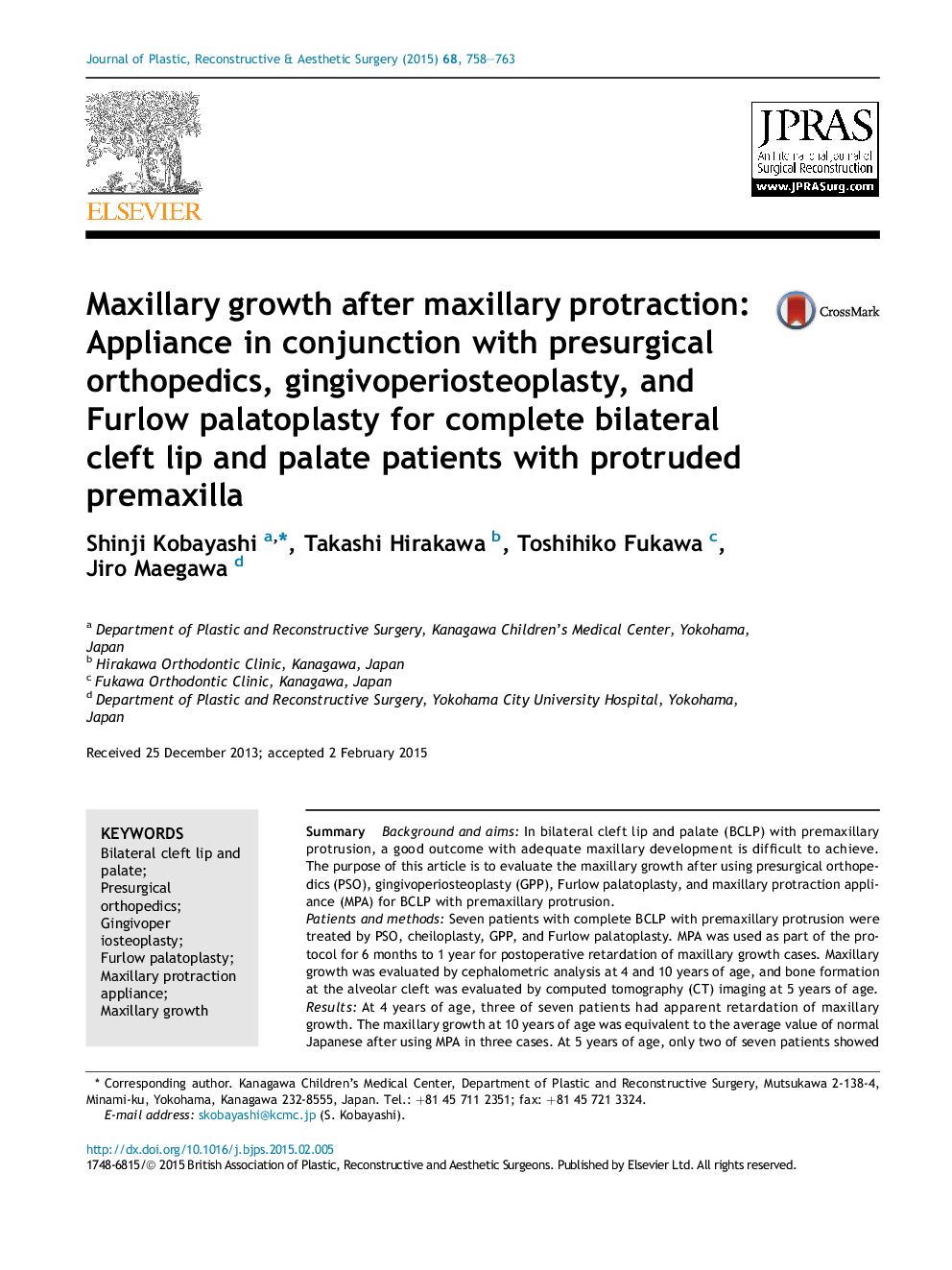| Article ID | Journal | Published Year | Pages | File Type |
|---|---|---|---|---|
| 6214475 | Journal of Plastic, Reconstructive & Aesthetic Surgery | 2015 | 6 Pages |
SummaryBackground and aimsIn bilateral cleft lip and palate (BCLP) with premaxillary protrusion, a good outcome with adequate maxillary development is difficult to achieve. The purpose of this article is to evaluate the maxillary growth after using presurgical orthopedics (PSO), gingivoperiosteoplasty (GPP), Furlow palatoplasty, and maxillary protraction appliance (MPA) for BCLP with premaxillary protrusion.Patients and methodsSeven patients with complete BCLP with premaxillary protrusion were treated by PSO, cheiloplasty, GPP, and Furlow palatoplasty. MPA was used as part of the protocol for 6 months to 1 year for postoperative retardation of maxillary growth cases. Maxillary growth was evaluated by cephalometric analysis at 4 and 10 years of age, and bone formation at the alveolar cleft was evaluated by computed tomography (CT) imaging at 5 years of age.ResultsAt 4 years of age, three of seven patients had apparent retardation of maxillary growth. The maxillary growth at 10 years of age was equivalent to the average value of normal Japanese after using MPA in three cases. At 5 years of age, only two of seven patients showed sufficient bone formation at the alveolar cleft to avoid alveolar bone grafting (ABG). Subsequently, ABG was performed in five patients.DiscussionAlthough three of seven patients had apparent crossbite at 4 years of age, the maxillary growth of all patients at 10 years of age was approximately equivalent to the average value of normal Japanese after using MPA. A treatment protocol based on PSO, GPP, Furlow palatoplasty, and MPA may be an option, but long-term growth is unknown.
